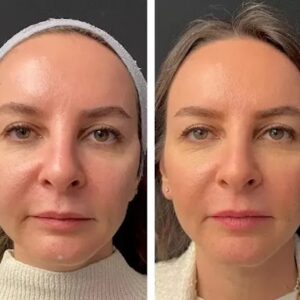The Importance of the Heart and Cardiovascular System
The heart is a muscular organ about the size of a fist. It pumps blood through a network of arteries and veins, delivering oxygen and nutrients while removing waste products. A healthy heart beats approximately 60–100 times per minute, adjusting to the body’s needs during rest, exercise, stress, or illness.
The cardiovascular system includes:
-
Heart
-
Blood vessels (arteries, veins, capillaries)
-
Blood
Together, they ensure proper circulation, temperature control, and nutrient transport. Because the entire body depends on continuous blood flow, any disturbance in heart function can lead to serious health consequences.
What Is Cardiology?
Cardiology is the medical specialty devoted to:
-
Diagnosing heart and blood vessel diseases
-
Performing tests and imaging studies
-
Providing medical treatment
-
Managing long-term heart conditions
-
Educating patients about prevention
Cardiologists undergo extensive training to understand the heart’s complex physiology and to manage both emergency conditions (like heart attacks) and chronic disorders (like high blood pressure).
Major Subspecialties in Cardiology
Cardiology contains several focused branches:
1. Interventional Cardiology
Specializes in catheter-based procedures like angioplasty and stent placement to open blocked arteries.
2. Electrophysiology
Focuses on diagnosing and treating heart rhythm disorders using pacemakers, ablation therapy, and monitoring tools.
3. Heart Failure and Transplant Cardiology
Manages severe heart failure, heart pumps (LVADs), and heart transplantation care.
4. Pediatric Cardiology
Treats heart problems in newborns, children, and adolescents.
5. Preventive Cardiology
Focuses on reducing the risk of heart disease through lifestyle management and early detection.
Common Heart Diseases
Cardiovascular diseases come in many forms, each affecting the heart or blood vessels differently. Below are some of the most common types.
1. Coronary Artery Disease (CAD)
CAD is the most common heart disease. It occurs when cholesterol and plaque build up inside the coronary arteries, reducing blood flow to the heart muscle. This process is called atherosclerosis.
Symptoms:
-
Chest pain (angina)
-
Shortness of breath
-
Fatigue
-
Heart attack (if blood flow becomes completely blocked)
2. Heart Attack (Myocardial Infarction)
A heart attack happens when blood flow to part of the heart is blocked for a prolonged period, causing irreversible damage. Quick treatment saves lives.
Signs include:
-
Severe chest pain
-
Sweating
-
Nausea
-
Pain radiating to the arm, jaw, or back
-
Shortness of breath
3. Heart Failure
Heart failure means the heart is unable to pump blood effectively. It does not mean the heart has stopped working; rather, it cannot supply the body with enough oxygen.
Causes:
-
CAD
-
High blood pressure
-
Heart valve disease
-
Diabetes
-
Cardiomyopathy
Symptoms:
-
Swelling in legs
-
Rapid weight gain
-
Fatigue
-
Shortness of breath
-
Difficulty lying flat
4. Arrhythmias (Heart Rhythm Disorders)
Arrhythmias occur when the heart beats too fast, too slow, or irregularly.
Types include:
-
Atrial fibrillation (A-fib)
-
Ventricular tachycardia
-
Bradycardia
-
Premature heartbeats
Symptoms:
-
Palpitations
-
Lightheadedness
-
Chest pain
-
Fainting
5. Hypertension (High Blood Pressure)
Often called the “silent killer,” hypertension rarely causes early symptoms but damages the heart, kidneys, and brain over time. It greatly increases the risk of heart attacks, strokes, and heart failure.
6. Heart Valve Diseases
The heart has four valves that keep blood flowing in the right direction. These valves can become:
-
Stenotic (too narrow)
-
Regurgitant (leaky)
-
Prolapsed (bulging)
Symptoms include chest discomfort, fatigue, and shortness of breath.
7. Congenital Heart Defects
These are heart abnormalities present at birth. They can range from small defects to complex structural problems requiring surgery.
Risk Factors for Heart Disease
Risk factors help predict a person’s likelihood of developing cardiovascular problems.
Modifiable Risk Factors (can be changed):
-
Smoking
-
Poor diet
-
Lack of physical activity
-
High blood pressure
-
High cholesterol
-
Obesity
-
Diabetes
-
Stress
-
Excessive alcohol use
Non-Modifiable Risk Factors (cannot be changed):
-
Age
-
Family history
-
Genetics
-
Gender (males have higher early risk)
Prevention focuses on managing modifiable factors to reduce overall risk.
Signs and Symptoms of Heart Problems
Heart conditions may present with a range of symptoms including:
-
Chest pain or pressure
-
Shortness of breath
-
Fatigue
-
Swelling in legs or abdomen
-
Dizziness or fainting
-
Rapid or irregular heartbeat
-
Cold sweats
-
Reduced tolerance to exercise
Early recognition is crucial. Many cardiac events can be prevented with timely intervention.
Diagnostic Tests in Cardiology
Cardiology uses advanced diagnostic tools to evaluate heart structure and function.
1. Electrocardiogram (ECG/EKG)
Measures the electrical activity of the heart and detects arrhythmias.
2. Echocardiogram
Ultrasound imaging that shows heart structure, pumping function, and valve status.
3. Stress Test
Evaluates heart function during exercise or medication-induced stress.
4. Cardiac Catheterization and Angiography
Involves inserting a catheter through blood vessels to view blockages in arteries.
5. Holter Monitoring
A portable device worn for 24–48 hours to track heart rhythm abnormalities.
6. Cardiac MRI and CT Scan
Provide detailed images for structural and vascular assessment.
7. Blood Tests (Cardiac Markers)
Detect enzymes like troponin, which indicate heart muscle damage.
These tools allow cardiologists to diagnose conditions accurately and choose the best treatment plan.
Treatment Options in Cardiology
Cardiology treatments fall into three main categories: lifestyle changes, medications, and procedures/surgery.
1. Lifestyle Modifications
Healthy habits are the foundation of heart disease prevention and treatment.
Key recommendations:
-
Quit smoking
-
Eat a heart-healthy diet (fruits, vegetables, whole grains, low salt)
-
Exercise regularly
-
Maintain a healthy weight
-
Reduce stress
-
Limit alcohol
Lifestyle changes significantly lower the risk of heart attacks and strokes.
2. Medications
Common medications include:
a. Anti-Hypertensive Drugs
Lower blood pressure
(e.g., ACE inhibitors, beta-blockershttps://easybacklinkseo.com/wp-admin/post-new.php#/)
b. Cholesterol-Lowering Drugs
Statins reduce plaque buildup.
c. Blood Thinners
Reduce risk of clots
(e.g., aspirin, anticoagulants)
d. Antiarrhythmic Drugs
Control abnormal heart rhythms.
e. Diuretics
Remove excess fluid in heart failure.
Medications are often the first line of treatment and must be taken consistently.
3. Medical and Surgical Procedures
Cardiology has evolved dramatically with minimally invasive techniques.
Angioplasty and Stents
Used to open blocked coronary arteries.
Pacemakers and Defibrillators
Treat slow or dangerous heart rhythms.
Ablation Therapy
Destroys abnormal electrical pathways causing arrhythmias.
Valve Repair or Replacement
Used for severe valve diseases.
Bypass Surgery (CABG)
Creates new pathways around blocked arteries.
Heart Transplant
Reserved for end-stage heart disease.
These procedures save millions of lives annually.
Cardiac Rehabilitation
Cardiac rehab is a structured program including:
-
Exercise training
-
Nutrition guidance
-
Counseling
-
Medical evaluation
It helps patients recover after heart attacks or surgeries and reduces future risks.
Preventing Heart Disease
Prevention is more effective and less costly than treatment.
Steps include:
-
Regular exercise
-
Healthy eating
-
Monitoring blood pressure and cholesterol
-
Avoiding tobacco
-
Managing stress
-
Regular check-ups
These habits protect heart health throughout life.
Cardiology and Technology: The Future
Exciting innovations are shaping the future of cardiovascular care.
1. Artificial Intelligence (AI)
Helps interpret ECGs, predict heart disease, and analyze imaging scans.
2. Advanced Imaging
3D echocardiography, CT angiography, and cardiac MRI will become even more precise.
3. Wearable Heart Devices
Smartwatches now detect arrhythmias and monitor heart rate continuously.
4. Robotic and Minimally Invasive Surgery
Improves precision and recovery times.
5. Regenerative Medicine
Researchers are exploring ways to repair damaged heart tissue using stem cells.
6. Personalized Medicine
Future treatments may be tailored to a person’s genetics and lifestyle.
These advancements promise better outcomes and a reduction in global heart disease.
Conclusion
Cardiology is a vital field dedicated to understanding and protecting the heart—the organ that keeps us alive every second. From diagnosing conditions like coronary artery disease and arrhythmias to performing life-saving procedures and promoting healthy lifestyles, cardiologists play a central role in modern healthcare. With advancing technology, early detection, and improved treatment methods, heart disease is becoming more manageable and often preventable. By embracing heart-healthy habits and seeking timely medical care, individuals can significantly reduce their risk and enjoy a longer, healthier life.








